David Riley’s books bring attention to amazing Pasifika people – both those here in Aotearoa and throughout Polynesia and the wider Pacific. His two latest books, Pasifika Coastwatchers and How Tonga got its Name / Ko e Founga Hono Ma’u ‘e Tonga ‘a Hono Hingoa look at WWII history and traditional tales respectively – and we asked Gem Wilder and her daughter Kōwhai to give us their thoughts.
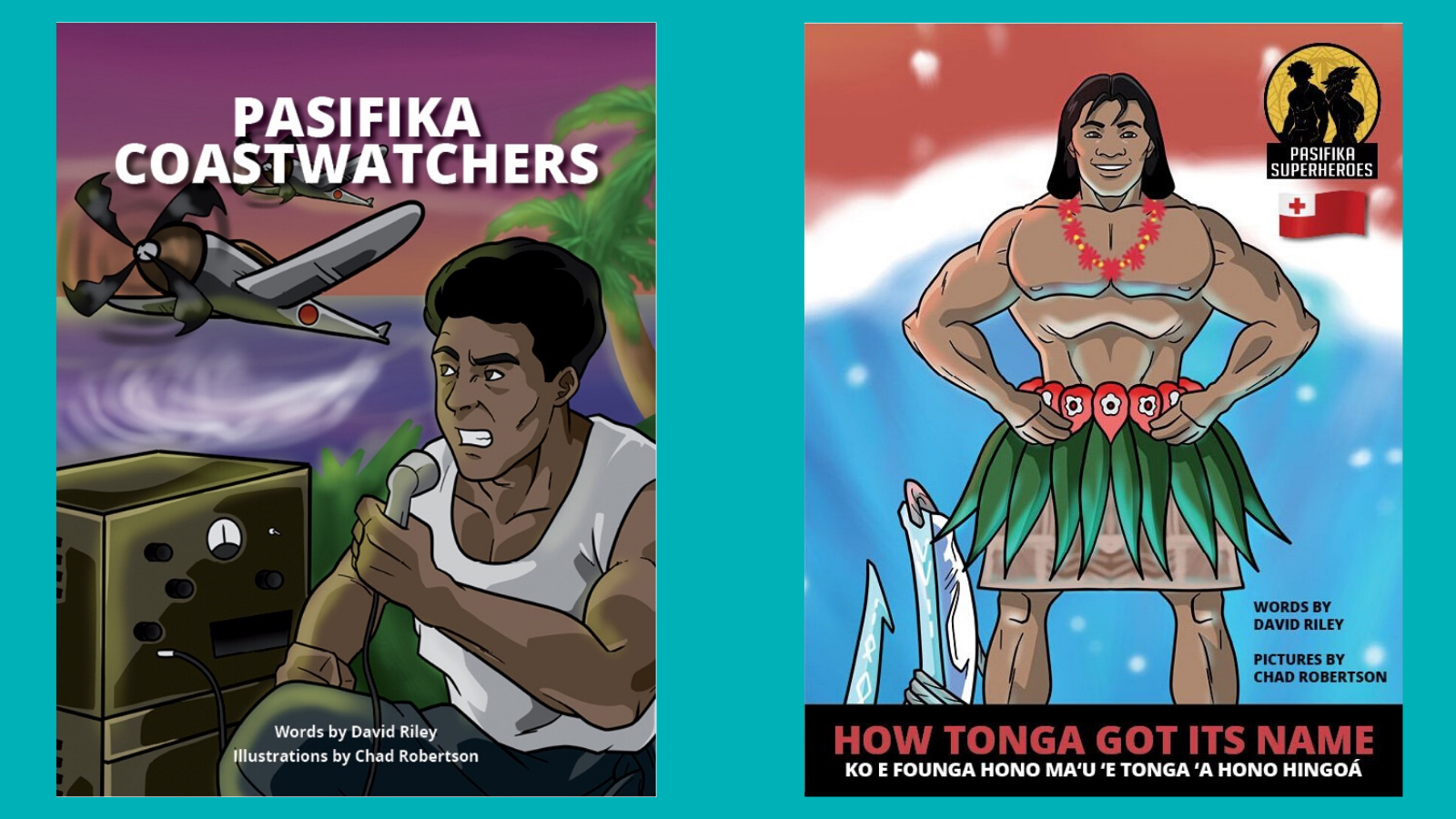
I first came across David Riley at a conference around five or so years ago, where I heard him talk passionately about the kids he taught: comparing their social media posts to literature, and inspiring in them a love of the written word. He saw a gap in the market for books they could relate to, these Pacific Island kids who couldn’t complete assignments about famous people from their home countries, because those books just weren’t being published. Since then, David has tirelessly sought to fill that gap as best he can. I jumped at the chance to read his latest offerings with my eight-year-old daughter.
Pasifika Coastwatchers, by David Riley illustrated by Chad Robertson
Pasifika Coastwatchers tells the stories of the many people from across the Pacific who, during the Second World War, set up coastal lookouts and reported on suspicious ships, submarines and aircraft via radio. They played a vital role in the war in the Pacific and yet, as someone who took history classes all through high school and a Pacific Studies paper at University, I’d never heard of them before
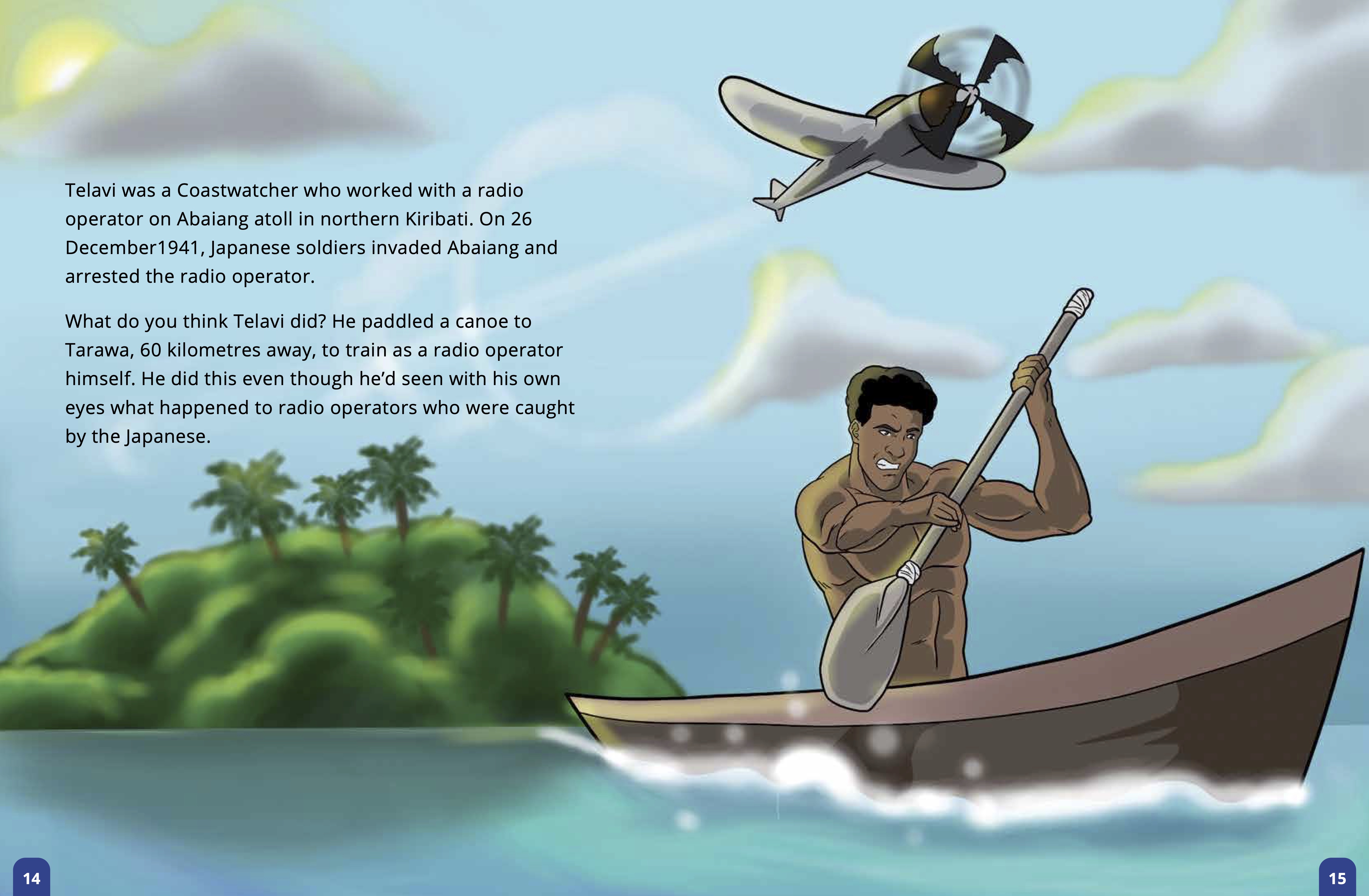
Riley sets the scene by beginning with the bombing of Pearl Harbor in 1941, when WWII began encroaching on the Pacific. One of my favourite things about this book is that it isn’t your typical black and white war story, with clear goodies and baddies. Right there on the opening page Riley says ‘Why did they do it? It seems strange to us, because Japan is one of the friendliest countries in the world.’ He makes sure kids reading this story today aren’t making judgements based on actions of the past. And throughout the book he continues, subtly, to give children (and adult readers) permission to question history and the texts we so often come across.
The book is full of details about the Pasifika Coastwatchers. We see how they lived, details of what they ate, the ways they volunteered for the job, or were recruited or nominated. We have details of the many countries they were working from. When I read aloud to my daughter ‘There were more than 100 coastwatching stations in the Pacific, including on Kiribati, Tuvalu, Fiji, the Cook Islands, Niue, Tonga, Samoa and Tokelau’, she repeated the countries she knew, and which she’d never heard of before. This gave me the opportunity to continue the conversation and learning away from the book, with the aid of a map.
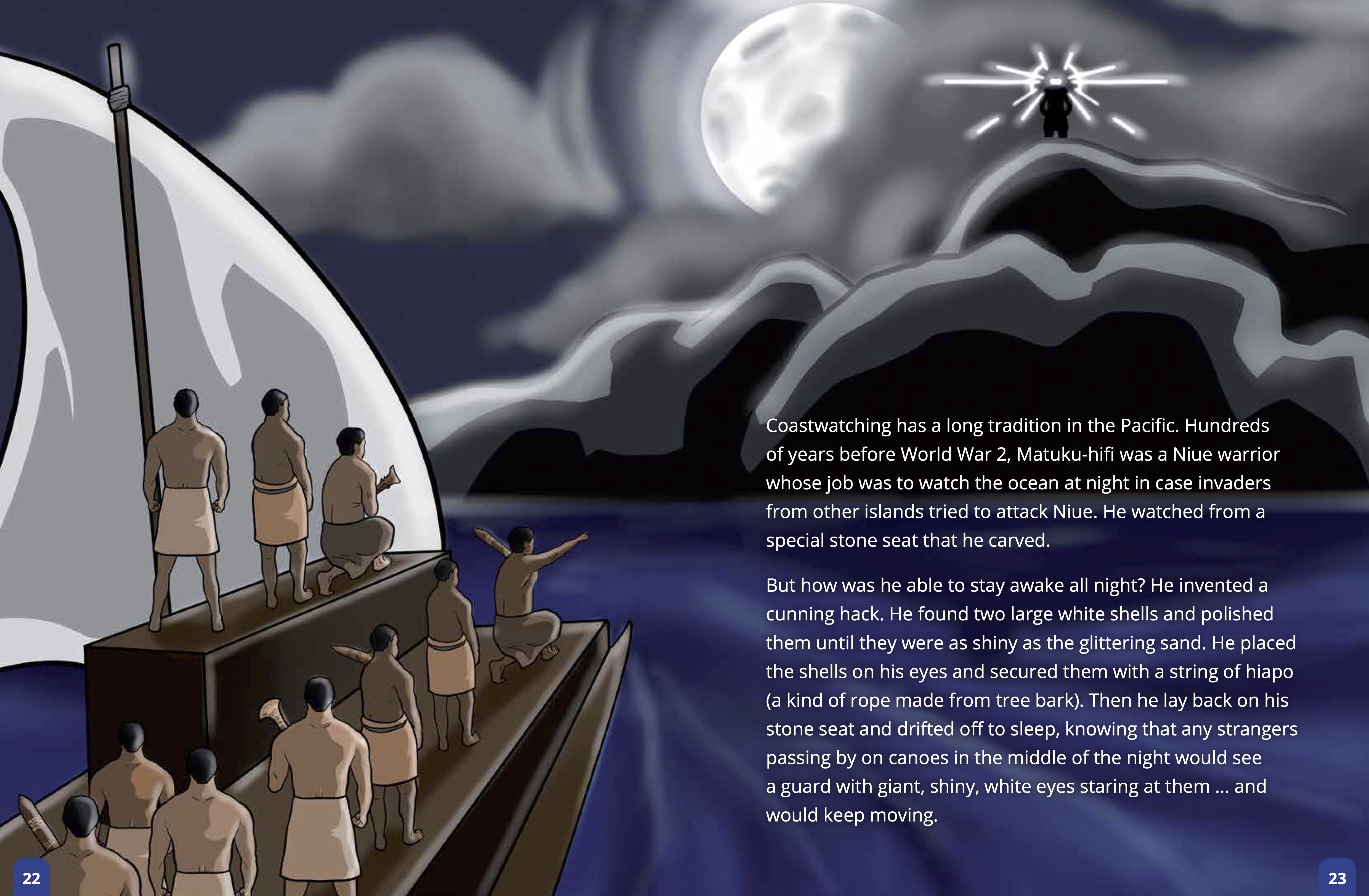
Riley has included many accounts of individual coastwatchers, and coastwatching stations. The stories are as varied as the islands themselves, and I was grateful to learn of the bravery shown by so many. One of my grandfathers was stationed in Fiji with the New Zealand Army during WWII, and yet the war in the Pacific is something I know so little about. As for my daughter, she was particularly thrilled to hear that there was a coastwatching station on Savaiʻi, Samoa, where we have ancestral ties.
However, she was appalled to hear that Pasifika coastwatchers received lower ranks and less pay than their counterparts from New Zealand and Australia. By including these facts, Riley continues to work towards amending imbalances.
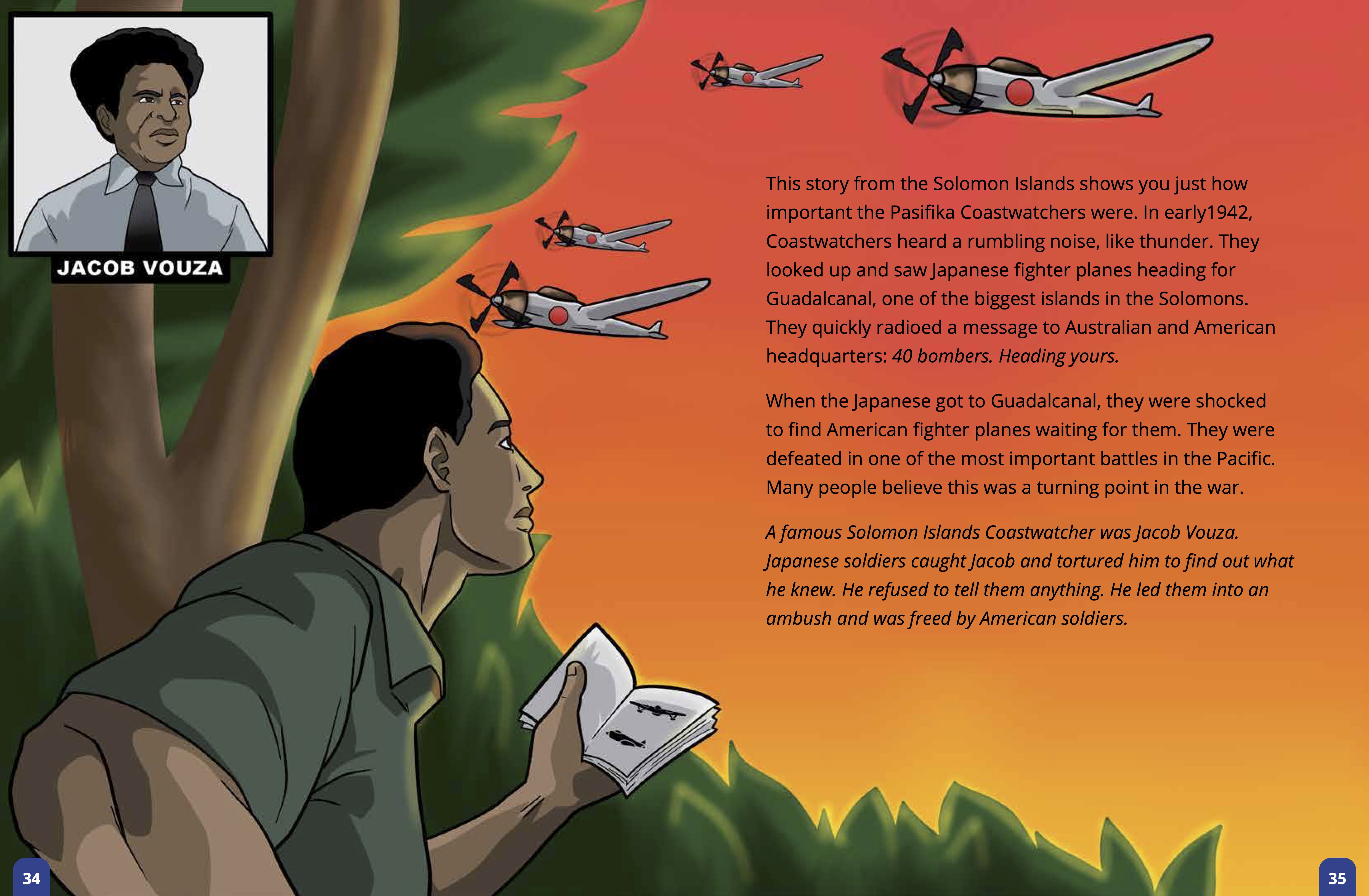
Overall I think this book would appeal to kids who love non-fiction, lots of facts, and history told through personal stories. In terms of reading aloud to my daughter, the sheer number of stories about different coastwatchers and coastwatching stations meant she started to lose interest after a while. But for a slightly older kid to read to themselves, it would be great. Give them a map of the Pacific to reference as they read and it could keep them busy for quite some time.
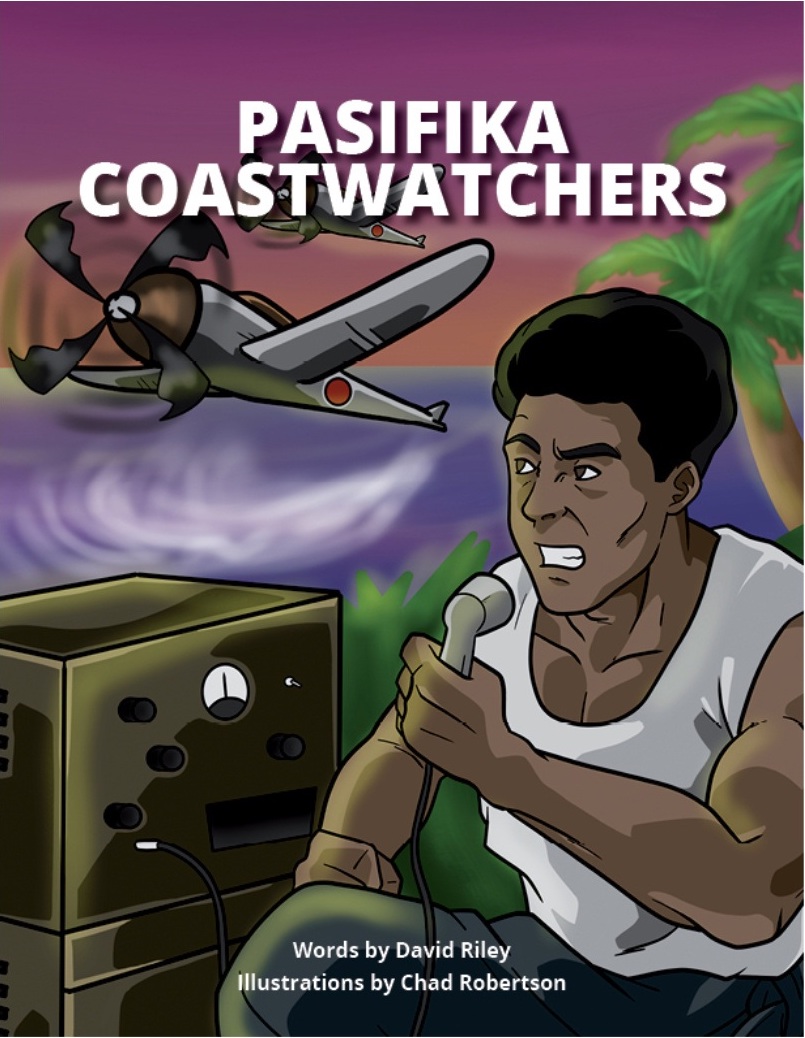
Pasifika Coastwatchers
by David Riley
Illustrated by Chad Robertson
Reading Warrior
RRP $30.99
How Tonga got its Name / Ko e Founga Hono Ma’u ‘e Tonga ‘a Hono Hingoa, retold by David Riley, illustrated by Chad Robertson, translated into Tongan by Julienne Faletau
Parents, this book has the technology you’ve been dreaming of! You know when you’ve been reading books, and you’re so tired, and your throat hurts, and you just want to close your eyes but your kid wants books, and who are you to deny them literature and a cuddle? In rides David Riley to the rescue with his QR code. You scan it, and it sends you to a recording of the book being read aloud that you can play on your phone! All you have to do is turn the pages! Brilliant! Even better, it reads the book in both English and Tongan, so you hear this legend of Maui in the language it was originally told in.
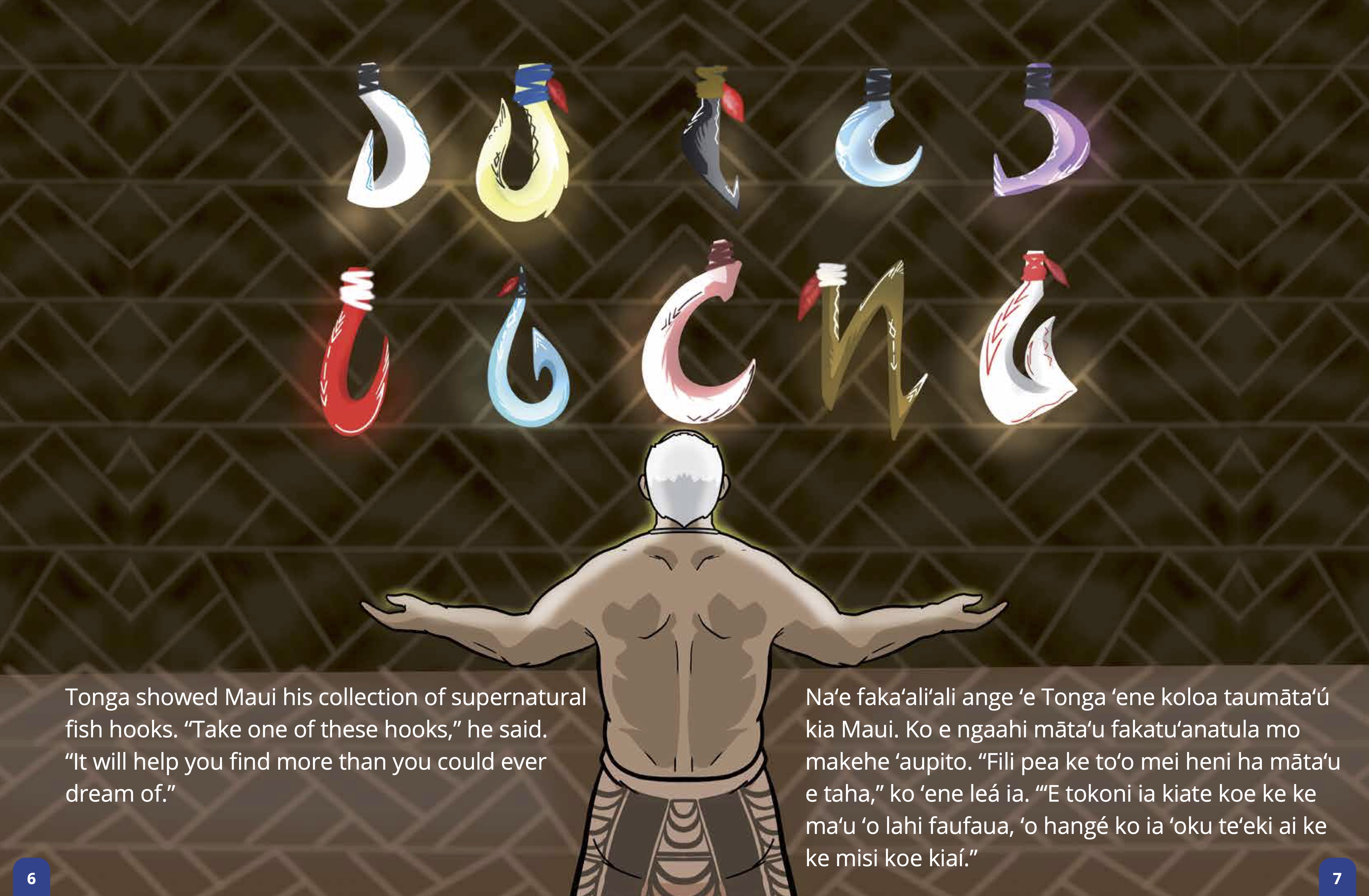
My daughter enjoyed listening to this book, following along with the bright graphic illustrations, and comparing the similarities and differences with the Māori Maui stories she knows. There’s a great page where an expert fisherman shows Maui his collection of supernatural fish hooks and says Maui can choose one. My daughter pointed out which hooks she would choose, and then asked me which I would choose, making the story interactive. She relayed to me how Maui gains his magical fish hook in Māori legend, taking pride in her knowledge, and drawing links between Polynesian cultures.
The story is brief, familiar, well-told, and illustrated in a bright, eye-catching way. It would appeal to a variety of ages, from very young pre-schoolers, through to older children like my daughter, who can draw links with stories they already know.
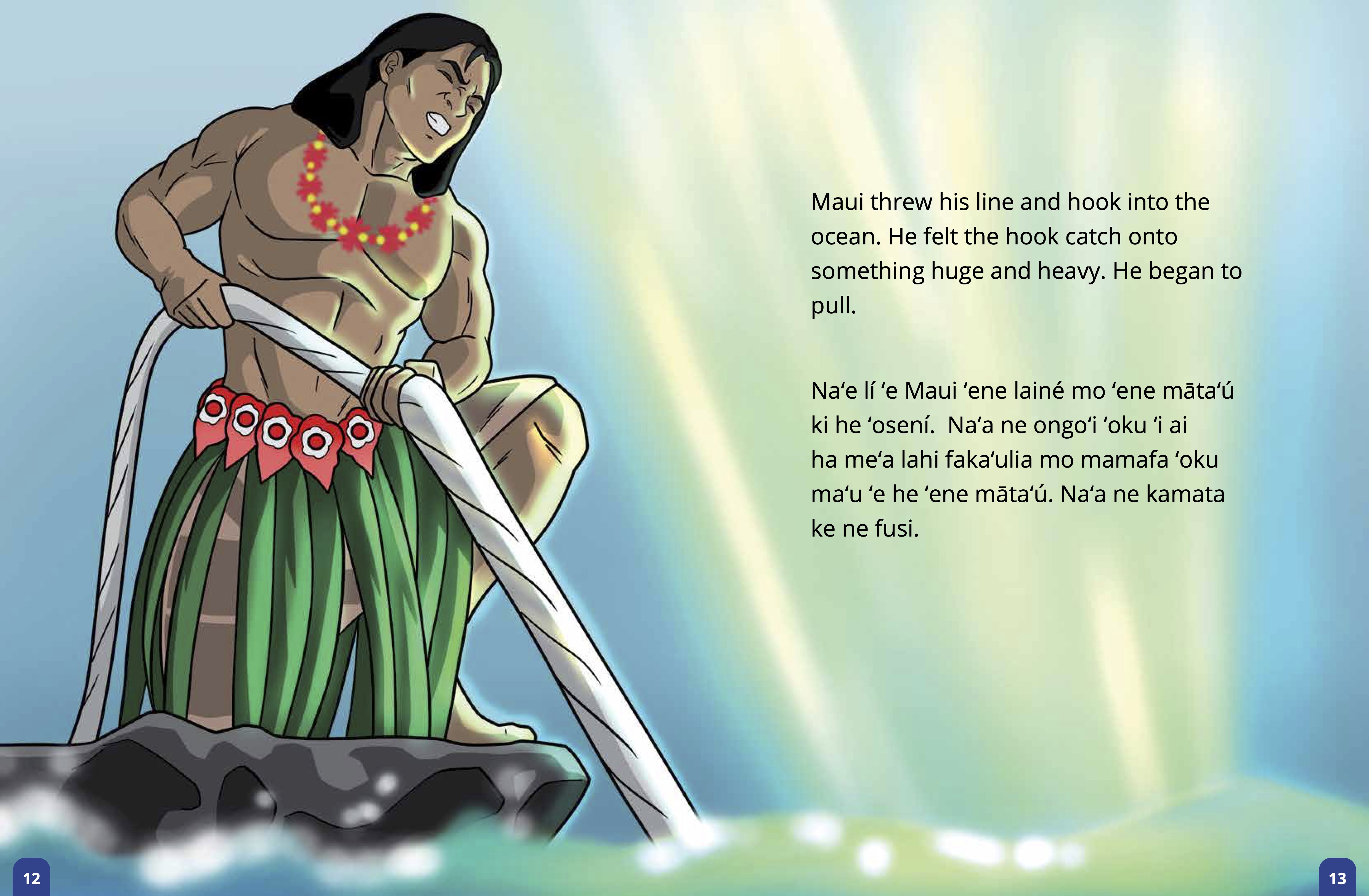
Both of these books are hardback, and are valuable additions to the wider collection of Riley’s works. I can see them lined up on a bookshelf as a whole collection, with kids working through them all, adding to the set with each new release, and having favourites that they return to again and again.
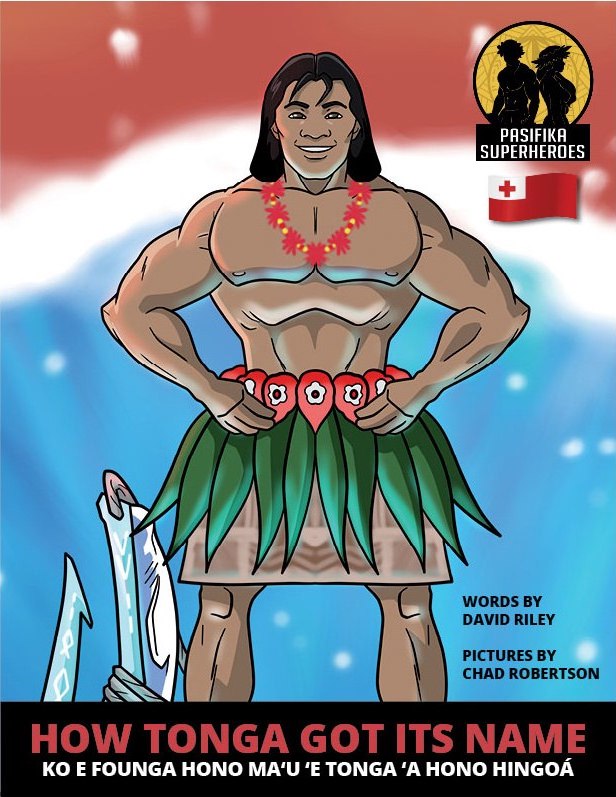
How Tonga got its Name / Ko e Founga Hono Ma’u ‘e Tonga ‘a Hono Hingoa
retold by David Riley
Illustrated by Chad Robertson
Translated into Tongan by Julienne Faletau
Reading Warrior
RRP $30.99

Gem Wilder
Gem Wilder is a Wellington writer whose work has been published in and performed at many places, including The Spinoff, The Sapling, Sport, Is It Bedtime Yet?, Enjoy Gallery, The Dowse, Wellington Museum, and LitCrawl.



